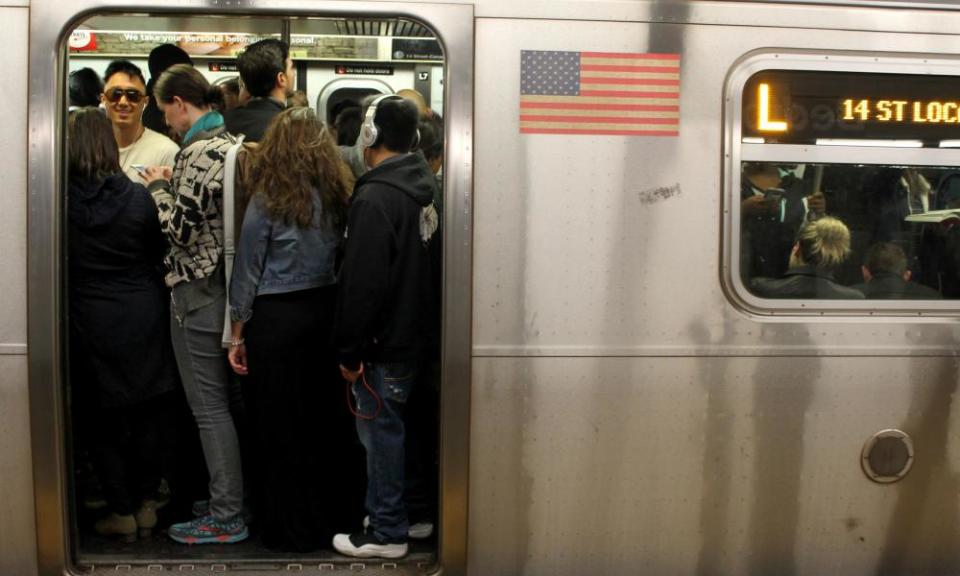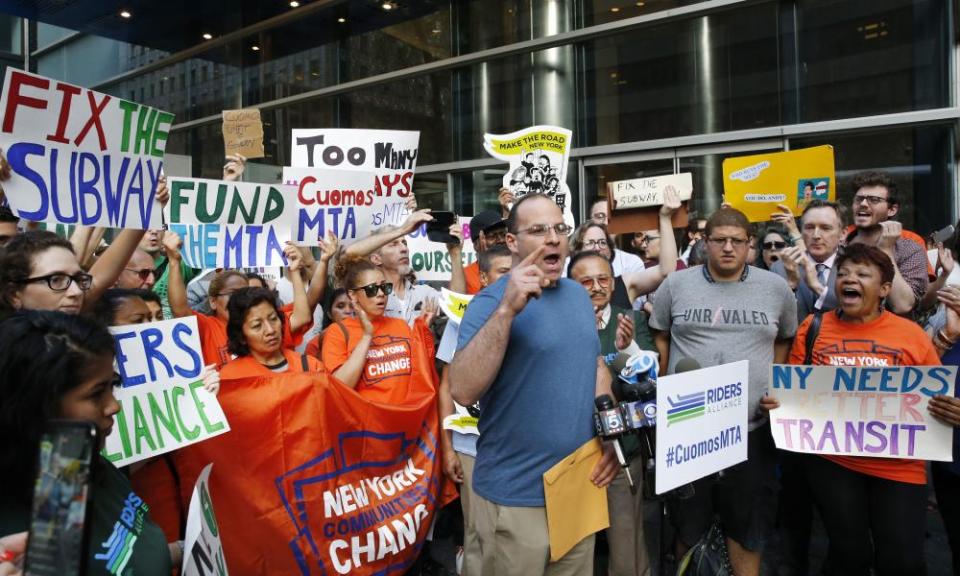Closures, overcrowding, rats: New York City commuters face 'summer of hell'
The city’s aging subway has been declared ‘a state of emergency’. Combined with closures on other rail lines, riders are bracing for the worst

There was a time – somewhere between the 1990s exorcism of violent crime from much of New York City and Thursday, when a “state of emergency” was declared for the city’s transit system – when a nightmare scenario on the subway meant a rat crawling up your leg, over your chest and nearly into your hoody.
That remains a vividly awful prospect. But in the summer of 2017, rats are competing with a ballooning number of alternative potential torments for commuters (the term is used optimistically) who venture into the city’s aging underground.
Dangerously overcrowded platforms. Chronically delayed trains. Terrifying and injurious derailments. Tunnel strandings. Signal malfunctions. Fisticuffs. Electrical outages. Garbled announcements. Knockout stenches. Non-rat wildlife. Stairs, shoulders, backups, backpacks, bad attitudes and bad breath.
A particularly unlucky group of rush hour F-train riders last month were stuck inside overheating train cars for so long that video of their desperate fingers prizing open fogged-up doors looked not so much like the scene from a commute as footage from a zombie movie.
S/b F train stuck for over an hour w/o light and air just rolled up-passengers dripping with sweat begging to get off #mta @MTA #effedtrain pic.twitter.com/NXJ3pDJtji
— Chelsea Lawrence (@chelseahbelle) June 5, 2017
Veteran straphangers will recognize none of those headaches as particularly new, although derailments, like the one on Tuesday in Harlem that injured 34 people, are still thankfully rare. The increasing frequency and scale of such breakdowns, however, will combine on Saturday with major track closures at the Pennsylvania Station transport hub to create what observers on all sides are predicting will be a “summer of hell” for riders in 2017.
“We are now beginning to see what happens when mass transit systems break down,” said governor Andrew Cuomo on Thursday in declaring the state of emergency, which is supposed to allow the Metropolitan Transportation Authority to accelerate repairs and the purchase of material and equipment. “This has been caused over decades, we understand that. But, the delays are maddening New Yorkers. They’re infuriated by a lack of communication, unreliability, and now accidents.”
The stakes, for those who would save the trains, go beyond the comfort of the system’s 9 million daily commuters. In addition to being one of the best-known symbols of New York City around the world, the subway system binds the city together literally and metaphorically, carrying its commercial and cultural workforce but also carrying out the promise of the city as a great democratic proving ground, where natives mingle with new arrivals from every corner of the globe and where there is no such thing as first class or coach.
On the subway, everyone pays the same $2.75 – and suffers through the same power outages and armpit encounters. If the system breaks down, one of the last claims to populist credibility for a city that boasts more and more $100m homes and fewer and fewer starving artists will crumble with it.
“I know what the subway system was, and it can be the crown jewel of New York,” said MTA chairman Joe Lhota, who was recently lured back to the post after his successful leadership of the agency through its impressive recovery from flooding in Superstorm Sandy in November 2012.
Speaking alongside the governor at the emergency declaration in Albany, the state capital, Lhota urged anyone within earshot to join a contest the agency is calling the “genius transit challenge”, in search of ideas to fix the trains and buses. “No idea is too crazy,” Lhota said. “No idea is too ambitious.”

How did it come to this? The agency claims that more money is needed for system maintenance. But the presence of enormous management challenges at MTA, cash flow notwithstanding, is plain; the agency, which has an operating budget of $15bn, has suffered from years of graft, corruption and abuse.
The agency blames the electrical utility, Con Edison, for system outages; Con Edison blames the agency. The governor blames the city mayor for political dickering; the mayor blames the governor. A large portion of the subway’s signals system, which stops trains from colliding but also stalls trains when it blinkers out, dates to before World War II. Ridership, meanwhile, has spiked, from about 4 million a day in the 1990s to nearly 6 million today, severely taxing the ancient infrastructure.
As a result, on-time performance is down for every single line in the subway system, with incidents of delay climbing, according to the agency, from 28,000 a month in 2012 to more than 70,000 a month now.
“We know the system is decaying and we know the system is decaying rapidly,” Cuomo said. “I think of it as a heart attack – it happens all of a sudden and the temptation is to say, well something must have just caused it. No, a lifetime caused it. Bad habits caused it. Lack of exercise caused it. Smoking caused it. Cholesterol caused it.”
One of the thorniest features of the problem, for those trying to fix it, is the sense that everything is breaking at once. “Summer of hell” declarations were prompted by the announcement by the Amtrak commuter railroad (not part of the MTA) of multiple track closures to begin inside Penn Station, which with 600,000 riders a day is the busiest rail terminal in North America.
While commuter railroad passengers trying to navigate New Jersey Transit, the Long Island Rail Road or Amtrak itself are expected to bear the brunt of the Penn Station repairs, no one has dared predict that traffic on the two subway lines that pass through the station will be uninterrupted.
Peter S Kalikow, a former MTA chairman, wrote this week in a New York Times opinion piece that the problem facing the subway is at bottom a question of agency management and political leadership.
“Cries for ‘bottom-to-top reviews’ are designed to convince the public that swift action is coming,” Kalikow wrote. “But commuters have heard this before, and they are rightfully skeptical. Money is only part of the problem, and not the heart of it: To get real results, the governor needs to insist on accountability and strong MTA leadership.”
Even if their sanities do survive the summer of hell, New York commuters will not be in the clear. The L train, one of the major lines between Manhattan and Brooklyn, is scheduled to close for 15 months of track repair beginning in April 2019.

